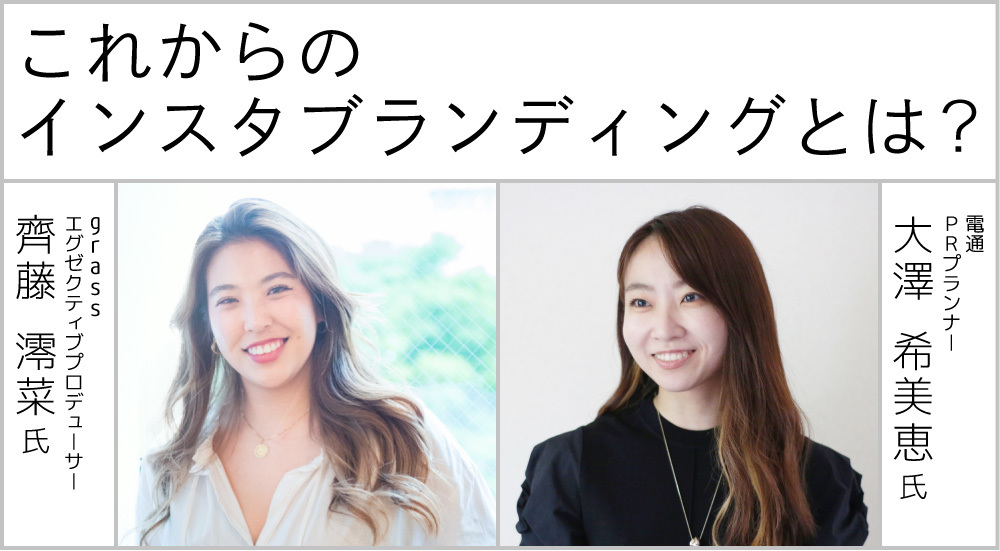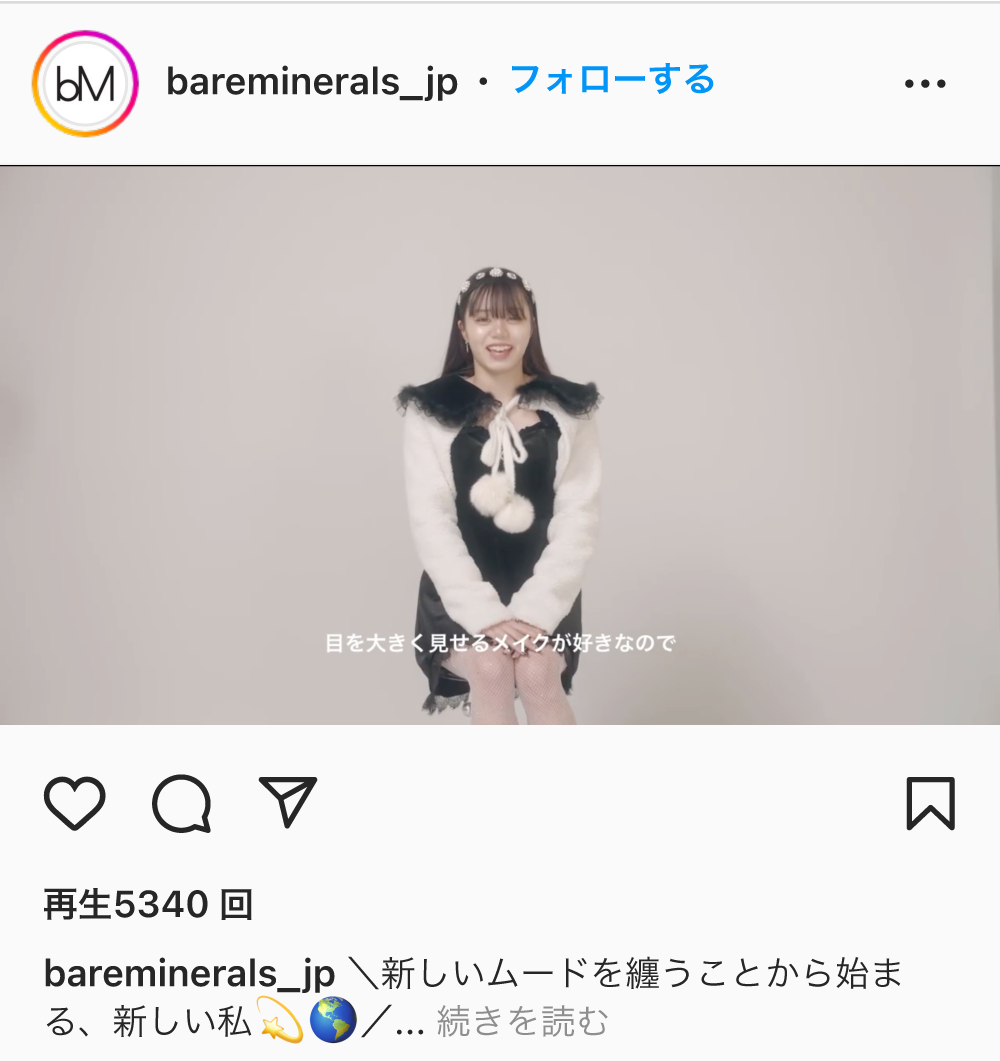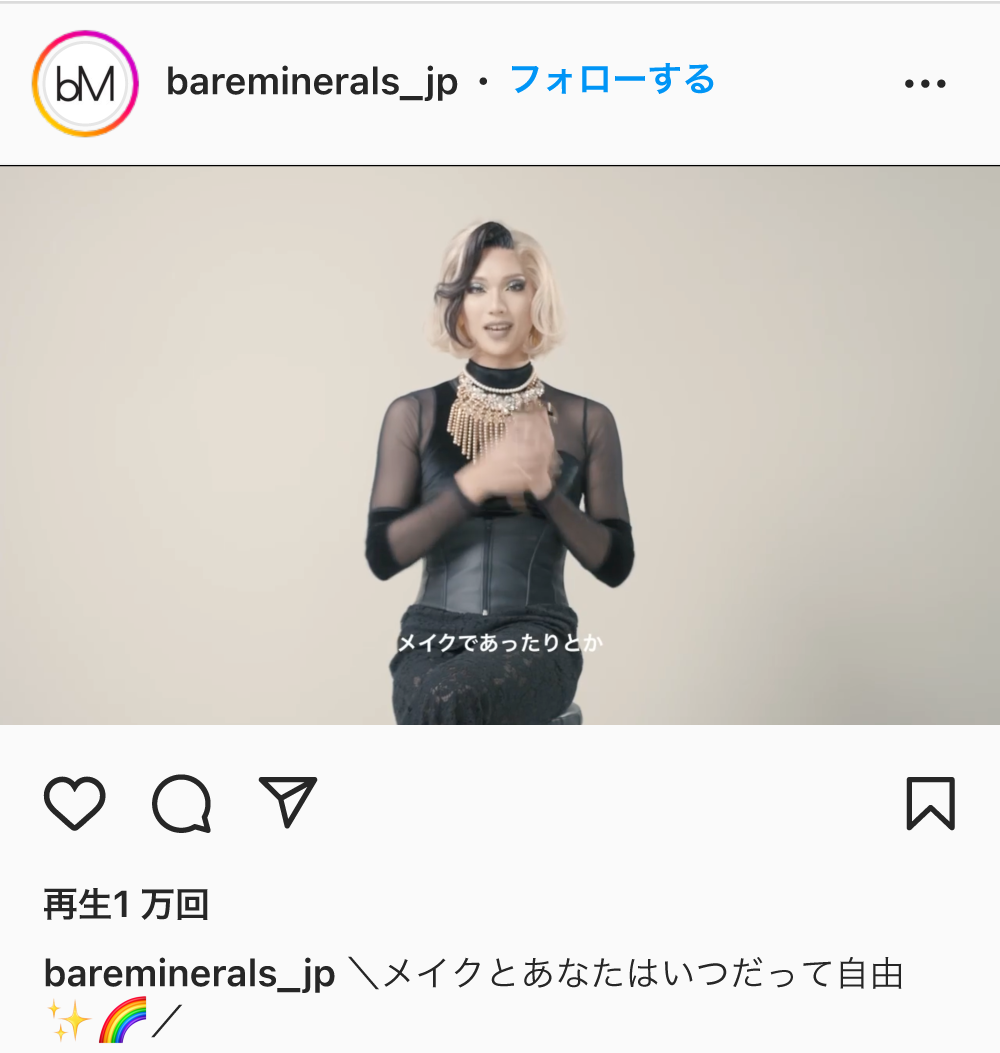Note: This website was automatically translated, so some terms or nuances may not be completely accurate.
Asking the Producer Who Made Matsuya's Instagram Go Viral: The Ideal Form of Corporate Content

Saito Mio
grass Inc.

Kimie Osawa
Dentsu Inc.
Many companies are now actively utilizing Instagram as part of their marketing activities.
However, it's also true that many companies are struggling to differentiate themselves and showcase their uniqueness as traditional marketing methods like "Instagrammability" and influencer collaborations have reached saturation.
Amidst this, Mina Saito, Executive Producer at grass Inc., has created viral buzz for numerous corporate accounts, including Matsuya Foods, a gyudon chain, through strategies unconstrained by conventional theories.
Drawing on past case studies and projects with Dentsu Inc., Dentsu Inc. PR Planner Kimie Osawa interviews her about the essential mindset needed for future Instagram branding.

What is "algorithm hacking" for reaching more people with posts?
Osawa: When it comes to Ms. Saito, she's often featured in the media as the mastermind behind Matsuya's Instagram, which sparked huge reactions with its edgy content. Could you tell us again what kind of work you typically do?
Saito: Broadly speaking, it's social media consulting. But beyond typical influencer marketing support, I'm often involved from the ground up—brand rebranding, concept planning, and more. I previously served as editor-in-chief for an overseas celebrity news platform run by a major printing company. Since members from that team are now part of grass, I'm skilled at adapting global cutting-edge trends for a Japanese audience.
Osawa: I found it really interesting how you incorporate your unique influencer perspective and Instagram know-how into your planning, given that you yourself are an active Instagrammer with over 20,000 followers.
Saito: That's right. Regarding influencer marketing, the current standard approach involves gifting (sending products or samples to influencers and requesting posts) and having them post with specific hashtags. However, influencers engage with greater passion when projects align with their own branding. So, we sometimes involve influencers from the planning stage to co-create content together.
Osawa: Your projects often draw attention for their unique content, but it seems there's actually meticulous analysis and careful planning behind the scenes?
Saito: Yes. For instance, actively adopting new features or those Instagram is promoting can increase exposure. While it's often called "algorithm hacking," understanding and tuning to the platform's algorithm helps your account be recognized as active. Conversely, if you post without considering the algorithm at all, you might post daily yet still barely appear in your followers' feeds.
Osawa: That's true—platform algorithms are constantly changing. Even if you've gained followers using established strategies, you still need to assess how much reach your subsequent posts are getting and how much engagement they're generating.
Matsuya's Instagram: Going All-In on Youth-Oriented Branding to Go Viral
Osawa: While algorithm hacks and such are important, the content itself is also crucial. In the Matsuya case, and the Ringer Hut case we worked on together with Dentsu Inc., I really liked how they showed the unexpected side or behind-the-scenes of a serious company.
Saito: To put it bluntly, I felt we had to confront the question head-on: "Do people really want to see the serious side of Matsuya or Ringer Hut on Instagram?" Instagram is ultimately a platform where people enjoy their private time. We must consider what we communicate during that precious time, including our positioning, character, and the image Instagram users hold of our company.
Osawa: For example, what kind of approach did you consider for Matsuya?
Saito: Matsuya is a brand with such high name recognition in Japan that you could say almost everyone knows it, and it's beloved by passionate fans. On the other hand, while it's also well-known among Gen Z and Millennials, who form the core of Instagram users, when it comes to having a specific image of the brand, honestly, it wasn't a particularly relatable presence. Our biggest challenge was how to win over new generations while cherishing existing fans. So, we decided to continue sharing information for existing customers on Twitter, while fully committing to branding for younger generations on Instagram.
Osawa: I see. Hearing that makes me realize how crucial it is to define Instagram's purpose within the brand. In Matsuya's case, I think it was precisely because they committed fully to youth-focused branding that they could produce such edgy content. By the way, what kind of content resonated with the younger audience?
Saito: Anything that paid homage to trends that had become too mainstream or posts everyone was used to seeing on Instagram got huge reactions. For example, when "staying home" became a trend, there was a period when Instagram was flooded with posts of overly stylish interiors. Or when Reels※1 capturing "emo" scenes of high schoolers became popular. We timed it right to pick up on those typical Instagram posts and turn them into our own content.
※1 Reels: A feature allowing users to post and view vertical videos up to 60 seconds long.

Osawa: When "nostalgic Heisei" became a hot topic, I was surprised to see Matsuya's "deco-den" posted so quickly (laughs).
Saito: We had our in-house team create that deco-den as fast as possible (laughs).
Osawa: They really do have so many interesting posts. I imagine these kinds of projects couldn't happen without the client's understanding. How did you build that relationship?
Saito: Since Matsuya's posts got a huge user response right from the start, we began by collecting comments from social media, compiling them into a report, and sharing the reactions with the client. As a result, the people in charge started developing a real attachment to the account. Eventually, they even started doing ego searches themselves, and we were able to grow the account together.
Osawa: That's wonderful. I feel the clients' passionate commitment to nurturing their own accounts directly contributes to the final project's appeal.
How do you engage young people who aren't actively seeking information?
Osawa: Ringer Hut also started with the challenge of cultivating younger fans, since its main customer base was men in their 30s and older, right?
Saito: That's right. We managed Ringer Hut's Instagram account until February 2022. Similar to the Matsuya case, while the brand had name recognition, its image hadn't taken root among younger people. That's precisely why it was crucial to figure out how to capture young people's attention within the Instagram platform. Thinking about it that way, doing the same things as competing restaurant accounts wouldn't spark their interest, and posts that felt like noise to users would actually be counterproductive. We really thought hard about how to make people who weren't even looking for information perceive us favorably or enjoy our content.
Osawa: As a result, that first post paying homage to a high-end brand ad got an incredible response, right? Reach numbers shot up, and likes increased significantly too.

Saito: Yes. It was shared not only by our target users but also by many people working in advertising and marketing within the same industry. In terms of generating buzz, I think it was a successful strategy.
Osawa: By deliberately releasing content without a unified theme this time, we managed to create a sense of excitement when viewing the account as a whole. I think the key to gaining support was not presenting the same face as a brand all the time, but rather aligning with the kind of fun young people seek at any given moment. In fact, our survey showed that high school girls unfamiliar with Ringer Hut saw our Instagram and responded, "I thought it suited me." So, even though each piece of content was distinct, we likely created something that collectively struck a chord with young people.
Saito: Also, something we only realized as the project progressed: for Ringer Hut, it wasn't just edgy content that performed well—simple posts filled with genuine affection for the products also got strong engagement. I think a key factor behind this is that Ringer Hut's existing customer base closely matches Instagram's user demographics. In other words, product features like getting plenty of vegetables and the welcoming atmosphere of the stores resonated strongly with younger people. Based on that, we adjusted to include more details about the product's unique features and deeper information in the captions, right?
Osawa: So, it's not true that posting edgy content like Matsuya does is the only Instagram branding theory. And of course, success isn't guaranteed just by posting daily or every three days. It's crucial to consider various factors when creating content: the brand's characteristics, the image Instagram users have of it, and the micro-moments happening at any given time.
From "Instagram for looks" to Instagram that satisfies intellectual curiosity
Osawa: We've covered two restaurant examples so far. Could you share an example from a non-restaurant industry?
Saito: I'd like to introduce the American cosmetics brand "bareMinerals," which I've recently been assisting. While clean beauty and diversity have gained traction in the cosmetics industry in recent years, this brand has been advocating for these values for decades, long before SDGs became a trend. Naturally, this strength gives them potential to resonate with Gen Z and Millennials.
However, regarding Instagram, there was a major hurdle: due to regulations in its home country of the US, only globally standardized content could be posted to the feed. While original content could be posted to IGTV (※2) and Reels, we also identified the challenge that existing content didn't align with target needs. In fact, while the account itself had over 25,000 followers, the reach of posts was extremely low.
Therefore, for the feed, we first curated and reorganized the global content. For Reels, we created videos emphasizing that BareMinerals is a brand that can connect with all types of people.
For example, there are high school girls who use glitter to make their eyes look bigger. That's wonderful, but we also wanted them to know about makeup that enhances their natural features. With that in mind, we planned a makeup video.
More men than ever are using makeup for self-expression. For Reels, we planned a video featuring a male model dressed up in glamorous makeup trying a boyish, casual look.
We also created videos featuring models from the mothers' generation of young people.
※2 IGTV: A feature allowing posting and viewing of videos up to 60 minutes long. Service ended in March 2022.
Osawa: It's interesting that even though young people are the target audience, you don't just use young models; you also create content for other generations.
Saito: The "this brand is for you" message is so commonplace. We really wanted to clearly express that this is a brand that fits any generation, regardless of gender.
Osawa: How has the response been?
Saito: Thanks to everyone, we keep getting requests like, "I want to be in it too!" (laughs).
Osawa: Listening to you, I realized Instagram is shifting from just being about "looking good" or "being photogenic" to being expected to fulfill a role that satisfies intellectual curiosity. Maybe content that offers deeper information, not just visuals, will gain more support going forward.
On the other hand, mental health among younger generations has gained significant attention recently. There's also focus on the pros and cons of SNS interfaces that encourage endless scrolling – essentially, their addictive nature. I think being able to foster communication that considers maintaining a healthy distance from SNS could become a key differentiator for companies going forward.
Saito: I felt this during the BareMinerals project too—young people today are very much "authenticity-oriented." I feel this myself; social media that only shows cool or glamorous sides can be exhausting. To keep being a platform where people can enjoy things casually and positively, including their true selves, I want to keep thinking about what I can do moving forward.
Osawa: Thank you so much for today!
For inquiries regarding grass Inc.
090(7266)1559
kitajima@grass-inc.design
Was this article helpful?
Newsletter registration is here
We select and publish important news every day
For inquiries about this article
Author

Saito Mio
grass Inc.
Executive Producer
After working at a Dai-Nichi Co., Ltd. group company, he served as editor-in-chief of the web media outlet "CELESY" and as head of new business development. Since 2018, he has been the executive producer at grass, overseeing client projects. He has been featured in numerous interviews himself, and his lifestyle has garnered attention from young people.

Kimie Osawa
Dentsu Inc.
PR Planner
After working at Dentsu Digital Inc. and transferring to the PR Solutions Division, I handle a wide range of responsibilities centered on PR, including mass advertising, social media, product development, and events.




